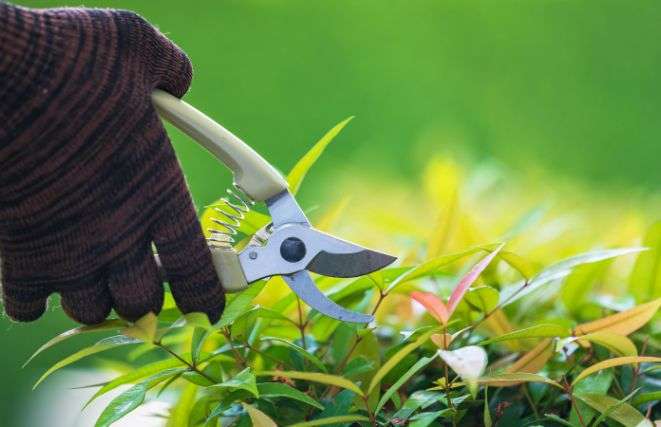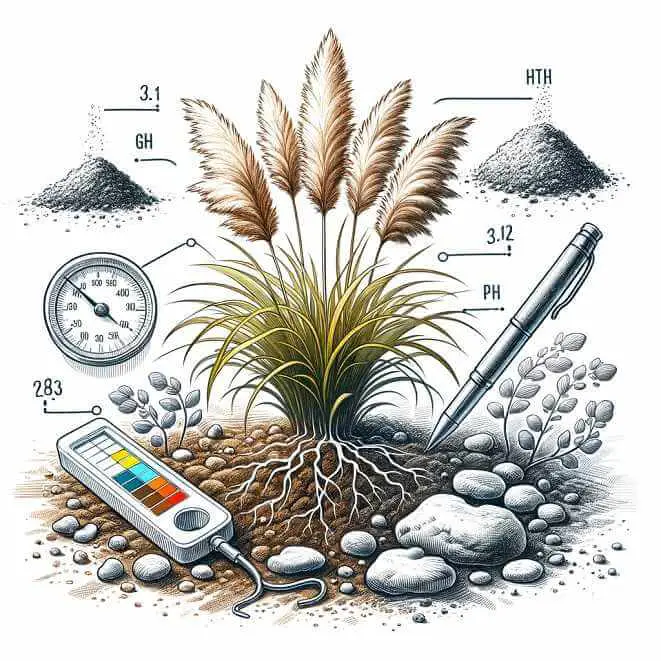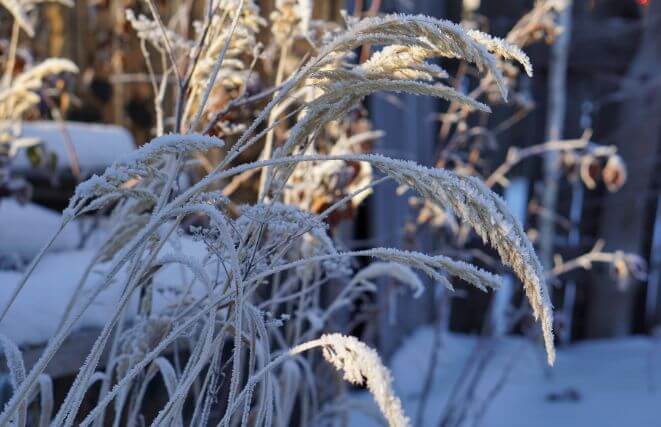Ornamental grasses bring an element of elegance and natural beauty to any landscape. To maintain their aesthetic appeal and promote healthy growth, regular trimming is essential. Trimming ornamental grasses may seem like a daunting task, but with the right techniques and timing, you can achieve a graceful and captivating result. In this comprehensive guide, we will explore the step-by-step process, tools required, and best practices for trimming ornamental grasses, ensuring your landscape remains a visual masterpiece.
Understanding Ornamental Grasses
Before we delve into the art of trimming ornamental grasses, let’s gain a better understanding of these remarkable plants. Ornamental grasses come in a variety of sizes, colors, and textures, adding movement, structure, and interest to gardens and landscapes. From the feathery plumes of pampas grass to the arching blades of maiden grass, these grasses provide year-round beauty and require minimal maintenance.
Finding the Right Approach for Your Grasses
Ornamental grasses add beauty, texture, and movement to any landscape. To keep them looking their best and maintain their health, proper trimming is essential. However, finding the right approach for trimming ornamental grasses can vary depending on the specific type of grass and the season.
Cutting Back Dormant Long Grasses
During the dormant season, when many ornamental grasses enter a period of rest, it’s essential to provide them with proper care to ensure vibrant growth in the following seasons. Start by gathering your tools—an ergonomic pair of shears or hedge trimmers and a pair of sturdy gloves. Long grasses, such as Feather Reed Grass (Calamagrostis × acutiflora) and Switchgrass (Panicum virgatum), can be pruned in late winter or early spring, before new growth emerges. Using your shears, cut the grasses back to a height of 4 to 6 inches above the ground, removing the previous year’s foliage. This rejuvenation technique not only enhances their appearance but also prevents potential pest and disease issues.
Trimming Dormant Short Grasses
Short grasses, such as Blue Fescue (Festuca glauca) and Japanese Forest Grass (Hakonechloa macra), require a slightly different approach when it comes to trimming. These grasses maintain their compact form and are best trimmed in early spring, just before new growth appears. Using a clean pair of shears, carefully remove the dead or damaged leaves, cutting them down to ground level. Be sure to avoid cutting into the crown of the plant, as this may hinder its growth. By pruning short grasses, you not only maintain their tidy appearance but also encourage fresh growth, resulting in lush, vibrant displays.
Maintaining Evergreen Grasses
Unlike their dormant counterparts, evergreen grasses provide beauty and interest throughout the year. To maintain their striking appearance, it’s important to follow a few key practices. Begin by removing any brown or damaged foliage by hand or using a gentle combing action. Trim back any long or straggly stems to maintain the desired shape. However, be cautious not to remove too much green foliage, as this can compromise the overall health of the plant. By performing these regular maintenance tasks, you can enjoy the year-round allure of evergreen grasses, such as Mexican Feather Grass (Nassella tenuissima) and Blue Oat Grass (Helictotrichon sempervirens).
Factors to Consider
When deciding how to trim your ornamental grasses, there are a few factors to keep in mind:
- Grass type: Different grass species have varying growth habits and pruning requirements. Research the specific type of ornamental grass you have to ensure you understand its unique characteristics and optimal trimming methods.
- Season: The timing of pruning depends on the season and the growth pattern of the grass. Spring and late winter are generally the best times to prune most ornamental grasses. However, some grasses may benefit from trimming in the fall or summer. Consider the specific needs of your grass and the recommendations for its particular variety.
- Aesthetic preferences: The desired appearance and size of your ornamental grasses also influence your pruning approach. Some gardeners prefer a more natural look, allowing the grasses to retain their structure through the winter. Others may prefer a more manicured appearance and choose to trim more extensively.
Tools Required for Trimming Ornamental Grasses
To trim your ornamental grasses effectively, you’ll need a few essential tools:
- Pruning shears: These handheld tools with sharp blades are ideal for trimming smaller grasses and removing dead or damaged foliage.
- Hedge shears or electric trimmers: For larger grasses or more extensive trimming, hedge shears or electric trimmers provide efficiency and precision.
- Gloves and protective eyewear: Protect your hands and eyes with sturdy gloves and safety glasses to avoid any potential injuries from sharp grass blades.
Follow these steps to ensure a successful and graceful trimming of your ornamental grasses:
1: Timing and Preparation
- Determine the appropriate time for trimming: The ideal time to trim ornamental grasses is in late winter or early spring before new growth emerges. However, if you prefer to enjoy the winter interest provided by the grasses, you can delay trimming until early spring before new growth begins.
- Prepare the area: Clear the surrounding area of any debris or obstacles to create a clean and safe workspace.
2: Assessing and Pruning
- Observe the grass’s growth pattern: Take a moment to study the grass’s growth habit and identify any areas that need pruning, such as dead or damaged foliage.
- Determine the cutting height: Decide on the desired height for your grasses. You can either trim them down to the ground or leave a portion of the foliage for winter interest.
- Start pruning: Using pruning shears or hedge shears, carefully trim the grasses according to your determined cutting height. Make clean and smooth cuts at an angle to prevent damage to the plant.
- Remove dead or damaged foliage: While pruning, take the opportunity to remove any dead, diseased, or damaged foliage. This helps maintain the plant’s health and appearance.
- Gather and dispose of trimmings: Collect the trimmed foliage and dispose of it appropriately. Consider composting the trimmings if possible.
3: Post-Trimming Care
- Water the grasses: After trimming, provide the grasses with a thorough watering to help them recover and promote new growth.
- Apply fertilizer (optional): If desired, apply a slow-release fertilizer around the base of the grasses to provide them with essential nutrients for optimal growth.
- Mulch the area: Apply a layer of organic mulch around the base of the grasses to help retain moisture, suppress weeds, and regulate soil temperature.
Best Practices for Trimming Ornamental Grasses
- Wear protective gear: Always wear gloves and protective eyewear when trimming ornamental grasses to prevent injury from sharp blades.
- Tailor the trimming technique to the grass type: Different grass species may require specific trimming techniques. Research the specific requirements of your grasses to ensure you’re following the most suitable approach.
- Consider the overall shape: As you trim, step back occasionally to assess the overall shape and symmetry of the grasses. Make adjustments as needed to maintain an aesthetically pleasing appearance.
- Maintain a natural look: Avoid cutting the grasses into a perfectly uniform shape. Embrace the natural form and movement of the grasses, allowing them to retain their inherent beauty.
Trimming Ornamental Grass by Season
The pruning approach for ornamental grass varies depending on the season. In spring, cutting back to a height of 2-3 inches stimulates new growth. Summer pruning involves light trimming to maintain a neat appearance. Fall pruning focuses on cutting back to 2-4 inches to prepare for winter. Winter pruning is minimal, primarily aimed at removing dead or damaged foliage. Each season’s approach offers unique benefits, but it’s important to consider specific considerations such as frost, stress, winter protection, and the need for winter interest.
| Season | Pruning Approach | Benefits | Considerations |
|---|---|---|---|
| Spring | Cut back to 2-3 inches | Stimulates new growth and improves appearance | Avoid pruning too early if frost is expected |
| Summer | Light trimming | Maintain neat appearance and control height | Avoid heavy pruning to prevent stress |
| Fall | Cut back to 2-4 inches | Prepares for winter and promotes regrowth | Leave some foliage for winter interest |
| Winter | Minimal pruning | Remove dead or damaged foliage | Protect grass from extreme cold and snow |
Can you trim ornamental grasses in summer?
While the ideal time to trim most ornamental grasses is in late winter or early spring before new growth emerges, there are certain circumstances where trimming in summer may be necessary or beneficial. Some reasons for trimming ornamental grasses in summer include:
- Rejuvenation: If the grasses have become overgrown or damaged, a mid-summer trim can help rejuvenate their appearance and promote new growth.
- Managing Size: Certain grasses, such as tall varieties, may need occasional trimming in summer to prevent them from flopping over or taking up excessive space.
- Encouraging Fall Growth: Trimming in summer can stimulate regrowth and help the grasses establish before the arrival of cooler fall temperatures.
However, it’s important to note that not all ornamental grasses should be trimmed in summer. Some varieties, especially those that bloom in late summer or fall, should be left untrimmed to allow for the development of their attractive seed heads. It’s always best to research the specific grass variety and its pruning requirements before proceeding.
How to trim ornamental grass in summer?
Trimming ornamental grass in summer requires a slightly different approach compared to pruning in late winter or early spring. Here’s a guide on how to trim ornamental grass during the summer months:
- Timing: The best time to trim ornamental grass in summer is during the early to mid-summer, preferably before the grass starts producing seeds or flowering. This timing allows the grass to recover and continue growing during the remaining part of the growing season.
- Assess the growth: Before trimming, evaluate the grass’s growth and determine the amount of pruning needed. Some ornamental grasses may require only minor tidying up, while others may need more significant trimming to remove dead or damaged foliage.
- Gather and secure the grass: Carefully gather the grass blades together near the base, using your hands or a gardening twine or rope to secure them into a bundle. This makes it easier to control and cut the grass uniformly.
- Cut back the grass: Using sharp pruning shears or hedge clippers, trim the grass blades to the desired height. It’s generally recommended to remove around one-third to one-half of the total length. However, be cautious not to cut the grass too short, as it may stress the plant and inhibit regrowth.
- Clean up: After trimming, remove any clippings or debris around the base of the grass to maintain a tidy appearance.
- Water and care: Water the trimmed ornamental grass adequately following the trimming to help it recover and encourage new growth. Additionally, continue regular maintenance practices such as fertilizing and watering as needed throughout the summer season.
It’s important to note that not all ornamental grasses require trimming during summer, as some varieties may maintain their appearance without significant intervention.
Can you trim ornamental grasses in winter?
Yes, it is generally recommended to trim ornamental grasses in late winter or early spring before new growth emerges. This timing allows for the removal of the previous year’s dead foliage while avoiding potential damage to the emerging new shoots. Trimming in winter also helps to maintain the shape and appearance of the grasses before they start actively growing again in the spring. However, it’s important to consider the specific requirements of the ornamental grass species you have as some may have different pruning preferences. It’s always best to consult specific guidelines for the particular variety of ornamental grass you are working with to ensure proper trimming techniques and timing.
How to trim ornamental grass in winter?
Trimming ornamental grass in winter requires a different approach than pruning in other seasons. Here’s a guide on how to trim ornamental grass during the winter months:
- Timing: It’s best to trim ornamental grass in late winter or early spring, before new growth emerges. This allows the grass to maintain its structural integrity and protects it from potential winter damage.
- Safety first: Before trimming, make sure to wear appropriate protective gear, such as gloves and long sleeves, to shield yourself from sharp grass blades.
- Evaluate the grass: Assess the condition of the grass and determine the amount of pruning needed. Some grasses may only require minimal trimming, while others may need a more significant cutback to remove dead or damaged foliage.
- Cutting technique: Gather the grass blades together near the base and use pruning shears, hedge clippers, or a handheld hedge trimmer to cut the grass. Aim to trim the grass to a height of about 2 to 3 inches above the ground. However, the specific trimming height may vary depending on the grass variety.
- Cleanup: After trimming, remove the cut foliage and any debris around the base of the grass. This helps maintain a clean and visually appealing appearance.
- Mulching: Consider applying a layer of mulch around the base of the trimmed grass. Mulching provides insulation and helps protect the grass from extreme cold temperatures during the winter.
- Monitor and maintain: Throughout the winter season, keep an eye on the trimmed grass and remove any dead or damaged stems or foliage that may appear. This helps promote the health and appearance of the grass.
Remember, not all ornamental grasses require trimming in winter. Some grasses, such as evergreen varieties, may not need any pruning during this time.
Can you trim ornamental grasses in fall?
Trimming ornamental grasses in the fall is generally not recommended. Most ornamental grasses should be left untrimmed in the fall to allow their foliage and seed heads to provide visual interest and add texture to the winter landscape. The dried grasses can also provide habitat for beneficial insects and birds during the colder months. Additionally, leaving the foliage intact helps protect the crown and root system of the grasses from winter cold and frost.
However, there are some exceptions. If your ornamental grasses have become excessively floppy or damaged and are detracting from the overall appearance of your garden, you may choose to trim them in the fall. In such cases, it’s best to trim them back to a few inches above the ground, rather than cutting them too short. This approach will still preserve some of the grass’s structure while maintaining its winter interest.
How to trim ornamental grass in the fall?
Trimming ornamental grass in the fall requires a specific approach to prepare it for the winter months. Here’s a guide on how to trim ornamental grass during the fall:
- Timing: Trim ornamental grass in the late fall or early winter before the first frost arrives. This timing allows the grass to maintain its structure during the winter while removing any dead foliage.
- Gather the grass: Carefully gather the grass blades together near the base, using your hands or a gardening twine or rope to secure them into a bundle. This makes it easier to control and cut the grass uniformly.
- Cutting technique: Use sharp pruning shears, hedge clippers, or a handheld hedge trimmer to cut the grass. Trim the blades to a height of about 2 to 4 inches above the ground. It’s important to leave some foliage intact to provide winter interest and protect the crown of the grass.
- Cleanup: After trimming, remove the cut foliage and any debris around the base of the grass. This helps prevent the accumulation of dead material that can harbor pests or diseases.
- Mulching: Consider applying a layer of mulch around the base of the trimmed grass. Mulching provides insulation and helps protect the grass during the winter.
- Monitor and maintain: Throughout the fall and winter, periodically check the grass for any additional pruning needs. Remove any dead or damaged foliage to maintain the overall health and appearance of the grass.
By following these guidelines, you can ensure that your ornamental grass is properly trimmed and prepared for the winter, promoting its vitality and enhancing the visual appeal of your landscape.
How do you get rid of tall grass?
Getting rid of tall grass can be achieved through several methods, depending on your specific situation and preferences. Here are a few common approaches:
Cutting and Removing
One method is to mow or trim the tall grass to a manageable height using a lawnmower or a brush cutter. Once cut, you can gather the grass clippings and dispose of them accordingly. However, keep in mind that some grasses, such as invasive species, may require special disposal procedures to prevent their spread.
Digging and Pulling
For smaller areas or individual clumps of tall grass, manually digging and pulling can be effective. Use a shovel or a garden fork to loosen the soil around the base of the grass clump, and then carefully pull out the entire plant, including the roots. Be thorough in removing all the roots to prevent regrowth.
Herbicides
In cases where the tall grass is particularly stubborn or widespread, herbicides can be used. It’s important to choose a herbicide specifically formulated for grasses and follow the instructions carefully. Apply the herbicide to the grass according to the recommended dosage and timing, taking precautions to avoid affecting nearby desirable plants.
Smothering
Another approach to getting rid of tall grass is by smothering it with a barrier. This can be done by covering the grass with a thick layer of mulch, such as cardboard, newspaper, or black plastic. The barrier deprives the grass of sunlight, eventually causing it to die off. However, this method requires time and patience as it may take several months to completely eradicate the grass.
Professional Help
If the tall grass proves to be a persistent problem or if you’re uncertain about the best approach, it’s advisable to seek assistance from a professional landscaper or a local gardening expert. They can assess the situation, provide guidance on the most effective removal method, and ensure proper disposal of the grass.
Remember, it’s essential to identify the specific type of tall grass you’re dealing with, as some species may have specific removal requirements.
- MORE: How to kill pampas grass
FAQ
The best tool for cutting back ornamental grass is a pair of hedge shears or a pruning saw, depending on the size and density of the grass. Hedge shears are ideal for most grasses, with long, sharp blades that can cleanly and evenly cut through the stems. Pruning saws are useful for larger grasses with thick or woody stems. Additionally, handheld grass shears or garden scissors may work for smaller grasses. Always prioritize safety by wearing protective gear and being aware of your surroundings. With the right tool and precautions, you can efficiently trim your ornamental grasses, keeping them healthy and visually appealing.
To prune Karl Foerster grass (Calamagrostis x acutiflora ‘Karl Foerster’), begin by cutting it back in late winter or early spring before new growth starts. Gather the blades near the base and use sharp pruning shears or hedge clippers to trim the clump to a height of 4 to 6 inches above the ground. Make angled cuts to maintain a natural shape. Clean up any debris around the grass after pruning. Optional maintenance includes dividing the grass every few years. Throughout the growing season, remove dead or damaged stems or flower spikes to keep the grass tidy. By following these pruning steps, you can ensure the health, appearance, and vigor of your Karl Foerster grass.
Achieving Ornamental Grass Trimming Mastery
With the knowledge and techniques shared in this guide, you are now equipped to confidently trim and maintain your ornamental grasses. Remember to consider the specific characteristics and growth habits of each grass variety, adjusting your pruning approach accordingly. By embracing the art of trimming, you can unlock the full potential of these majestic plants, creating breathtaking landscapes that captivate the eye and inspire awe.
So, grab your shears, put on your gloves, and embark on a journey of transforming your garden into a sanctuary of beauty with meticulously trimmed ornamental grasses. Happy trimming!








